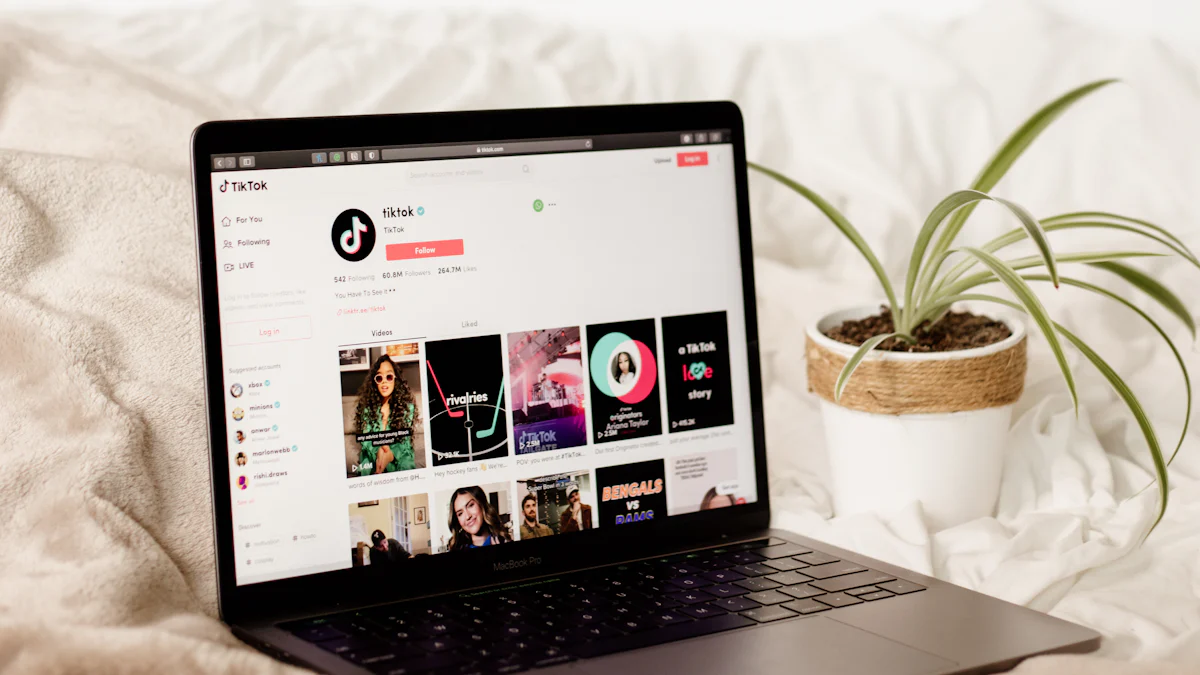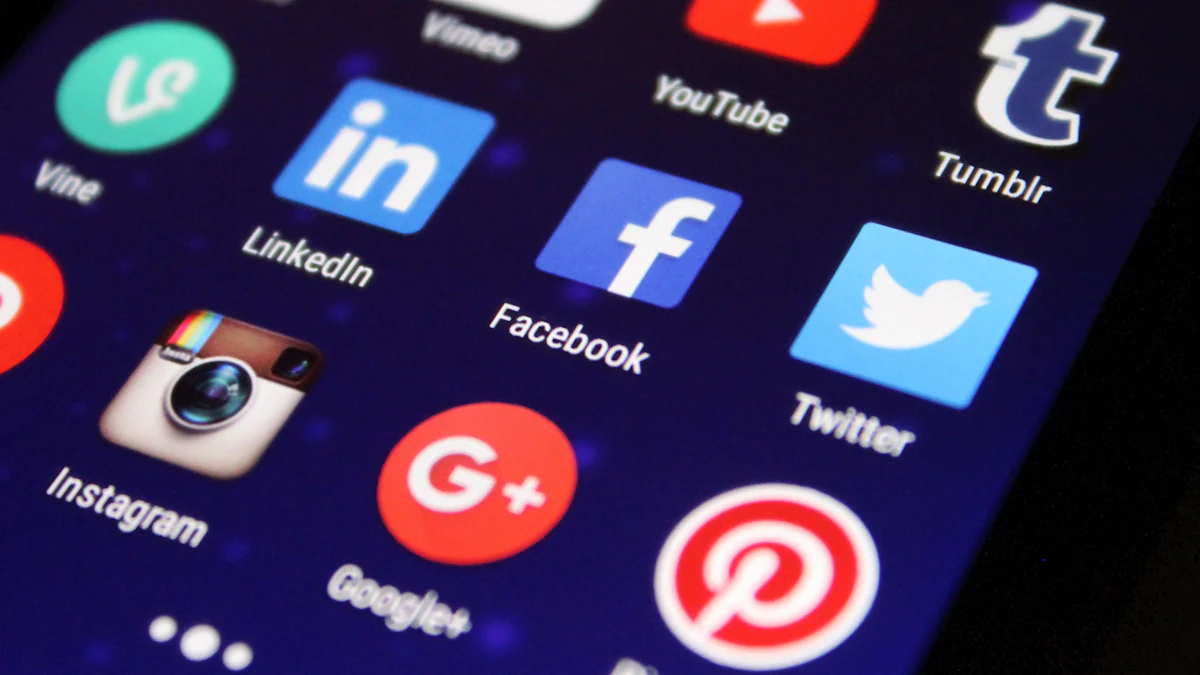How to Create Engaging Social Media Content for 2025

Social media in 2025 isn’t just about posting—it’s about truly engaging with your audience on social media. Platforms like Instagram and YouTube boast engagement rates of 23 percent, while Facebook lags behind with an average of just 0.07 percent. To stand out, you need to adapt to evolving technologies. Augmented reality (AR) makes content more interactive, with brands using AR filters on Instagram and Snapchat to connect with users. Meanwhile, AI tools help you analyze behavior, optimize visibility, and even automate personalized content. Staying innovative is the key to creating social media content that resonates and keeps your audience coming back.
Understanding Your Audience and Trends
Creating effective social media content starts with knowing your audience. When you understand their needs, stay updated on trends, and personalize your content, you can grow on social media and build a strong social media presence.
Identifying Audience Needs
Your audience is the heart of your social media content plan. To connect with your audience, you need to know what they care about. Start with audience research. Use tools like social media analytics, surveys, and customer feedback to gather audience insights. Platforms like Instagram Insights, Twitter Analytics, and Facebook Audience Insights can help you understand their behavior and preferences.
Here’s a quick list of tools to analyze audience behavior:
- Social media analytics tools (e.g., Sprinklr, Social Rank)
- Website analytics
- Customer feedback
- Social media audits
When you know your target audience, you can create content that resonates with them. This approach ensures quality and helps you drive engagement.
Staying Updated on Social Media Trends
Social media trends change fast. Staying ahead is key to building an online presence. In 2025, trends like AI-powered tools, social commerce, and community building will dominate. Users will value authenticity and transparency more than ever.
To stay updated, follow trusted platforms like Social Media Today or Mashable. Set Google Alerts for phrases like "TikTok updates" to get timely notifications. Keep an eye on trends like reactive social listening, employee-generated content, and participation in cultural moments. These strategies will help you grow on social media and create a strong social media strategy.
Personalizing Content for Engagement
Personalization is a game-changer for enhanced engagement. Tailor your social media content to your audience’s preferences. Use tools like Buffer AI Assistant or Canva to create personalized posts efficiently.
Here are some examples of personalized content that have driven high engagement:
| Example | Description |
|---|---|
| Brand Partnership | Pop-Tarts teamed with Good Humor to create ice cream bars. |
| Polls | Wendy's posted a poll about chicken nuggets, getting over 8.2K votes. |
| User-Generated Content | Stouffer’s retweeted a fan's post about their meals. |
| Contests | GoPro's #HomePro challenge invited fans to share moments at home. |
| Current Events | MoonPie engaged audiences with a video about their partnership with GFUEL. |
When you personalize your content, you connect with your audience on a deeper level. This approach ensures your social media content plan stays relevant and effective.
Choosing Platforms and Content Types
Selecting the Right Platforms
Choosing the right social media platforms is essential for reaching your audience effectively. Not every platform will suit your brand or goals, so you need to focus on where your audience spends their time. Start by considering key factors:
- Demographics: What’s the age, gender, location, income, or education level of your audience?
- Psychographics: What are their interests, hobbies, values, and lifestyle choices?
- Online Behavior: Which platforms do they use? How do they consume content? What are their pain points and aspirations?
For example, Instagram and TikTok dominate among younger users in 2025, with TikTok especially popular for Gen Z. Meanwhile, Facebook remains a stronghold for older demographics. YouTube continues to lead in long-form video content while also expanding its short-form video options. By understanding these trends, you can focus your efforts on platforms that align with your audience’s preferences.
Matching Content Types to Audience Preferences
Once you’ve chosen your platforms, it’s time to match your content to what your audience wants. Data analytics can help you understand their preferences. Use tools to analyze behavior, conduct keyword research, and segment your audience based on their needs.
Here are some effective content types for different audience segments:
- Interactive content like quizzes and polls boosts engagement.
- Social media posts and stories create real-time connections.
- Long-form content such as guides offers in-depth value.
- Interviews provide unique insights and build credibility.
Short-form video content is especially powerful in 2025. Platforms like Instagram and TikTok thrive on engaging short videos that grab attention quickly. By tailoring your content to your audience’s preferences, you’ll see better results.
Diversifying Your Social Media Content
Relying on one type of content or platform can limit your reach. Diversifying your social media content ensures you stay visible and adaptable. For instance, brands that used multiple platforms during Facebook’s 2020 ad boycott easily shifted their focus to YouTube or Pinterest.
Diversification offers several benefits:
- It helps you reach a wider audience since different platforms attract unique demographics.
- You can experiment with various formats, enhancing creativity and engagement.
- It opens up more opportunities for partnerships and monetization.
Mercedes-Benz demonstrated this with a diversified strategy, achieving its best product launch in 20 years. The campaign generated over 1 million impressions and brought in new customers from competing brands. By mixing short-form videos, long-form guides, and interactive posts, you can create a well-rounded strategy that keeps your audience engaged.
Leveraging AI and Emerging Tools

AI for Content Creation and Optimization
AI has revolutionized how you create social media content. It simplifies high-quality content creation by automating repetitive tasks and offering data-driven insights. For instance, AI uses natural language processing to generate human-like text for posts. Machine learning algorithms analyze user data to personalize content and boost audience engagement. Image recognition technology helps tag and categorize visuals, making your workflow smoother.
Here’s how AI can optimize your strategy:
- Automate manual tasks to save time and improve team efficiency.
- Personalize content based on audience behavior for better engagement.
- Use data insights to refine your social media content strategy.
By leveraging AI, you can focus on creativity while ensuring your content resonates with your audience.
Tools to Enhance Engagement
The right tools can take your social media content to the next level. Platforms like Narrato AI Content Genie and Buffer’s AI Assistant streamline planning, creation, and publishing. Canva offers over 100 layouts and AI-powered features like text-to-image capabilities, perfect for creating visually stunning posts.
Interactive tools also play a big role in boosting engagement. Chatbots and voice bots provide 24/7 support, making your audience feel valued. You can also use polls, quizzes, and contests to encourage participation. For video content, tools like Pictory and Lumen5 simplify video creation by converting text into engaging visuals.
When you combine these tools with a solid strategy, you’ll see your audience engagement soar.
Balancing AI with Authenticity
While AI is powerful, relying on it too much can make your content feel robotic. To maintain authenticity, always add a human touch. Edit AI-generated content to align with your brand’s voice. Personalize posts to reflect your audience’s preferences. Use AI as a creative assistant, not a replacement for your unique perspective.
Here are some tips to balance AI with authenticity:
- Humanize AI-generated content with personal anecdotes or humor.
- Combine AI insights with your experience to create relatable posts.
- Continuously refine your content to ensure it feels genuine.
By blending AI’s efficiency with your creativity, you can deliver high-quality content that connects with your audience on a deeper level.
Creating Interactive and Platform-Specific Content

Tailoring Content for Each Platform
Every social media platform has its own vibe, audience, and algorithm. To make your social media content stand out, you need to tailor it for each platform. Start by understanding where your audience spends their time. Platforms like Instagram and TikTok are perfect for short, snappy videos, while LinkedIn works better for professional updates.
Here are some best practices to help you adapt:
- Focus on your audience’s interests and pain points.
- Use a hub-and-spoke model to create adaptable content across platforms.
- Repurpose content by tweaking tone, visuals, and format for each platform.
For example, you can share behind-the-scenes stories on Instagram, post short updates on Facebook, and host live streams on YouTube. This approach ensures your content feels fresh and relevant wherever your audience interacts with it.
Encouraging Audience Interaction
Interactive content is a game-changer when you want to engage with your audience. It makes your posts more dynamic and encourages people to participate. Simple elements like polls, quizzes, or questions can spark conversations. Posting about trending topics or current events also grabs attention and invites responses.
Here are some ways to boost interaction:
- Use visually appealing videos or infographics to catch the eye.
- Highlight user-generated content to build a sense of community.
- Offer valuable or entertaining content that your audience can’t resist.
Buzzfeed’s success with interactive quizzes shows how this strategy can drive engagement. When you make your audience feel involved, they’re more likely to share your content, increasing your reach and visibility.
Experimenting with Immersive Experiences
Immersive experiences are the future of social media content. They let your audience dive into your brand’s world, creating unforgettable moments. Tools like display.land and Mozilla Hubs make it easy to create 3D models or virtual rooms that users can explore.
Some brands have already nailed this. Netflix’s Stranger Things: The Experience let fans interact with their favorite show in a real-world setting. Coca-Cola’s pop-up lounge at O’Hare Airport created shareable photo opportunities that went viral.
You can start small by using AR filters on Instagram or Snapchat. These tools make your content more interactive and fun. Immersive experiences not only keep users engaged longer but also encourage them to share, boosting your brand’s visibility.
Incorporating Social Commerce and Measuring Success
Using Shoppable Posts to Engage with Your Audience
Shoppable posts are a game-changer for social commerce. They let you showcase products directly on your social media feed, making it easy for your audience to shop without leaving the platform. This seamless experience enhances customer engagement and drives sales. Plus, it’s a great way to grow on social media by turning casual scrollers into loyal buyers.
Here’s why shoppable posts work so well:
- They simplify the purchasing process, inspiring impulse buys.
- They help you build a strong social presence and personality.
- They make product discovery fun and accessible for your audience.
Brands like All Saints and Kate Spade have nailed this strategy. All Saints uses user-generated content to create a shopping experience that feels like scrolling through a friend’s feed. Kate Spade takes it further by letting users compile a shopping cart at the end of their videos. These examples show how you can use shoppable posts to connect with your audience and boost conversions.
Tracking Key Metrics for Social Media Content
Tracking the right metrics is essential to measure your success and grow on social media. Start by focusing on three key areas:
- Engagement metrics: Likes, comments, and shares show how well your content resonates with your audience.
- Conversion metrics: Click-through rates and conversion rates reveal how effective your posts are at driving actions.
- Audience metrics: Follower count and demographics help you understand who’s engaging with your content.
Tools like Meta Business Suite and TikTok Analytics make it easy to track these metrics. For example, Meta Business Suite provides insights for Facebook and Instagram, while TikTok Analytics focuses on video performance. By analyzing these numbers, you can refine your strategy and create content that truly connects with your audience.
Avoiding Common Mistakes and Staying Authentic
It’s easy to fall into common traps when creating social media content. Overusing trends or relying too much on automation can make your posts feel impersonal. To avoid this, focus on authenticity. Your audience values genuine connections, so let your brand’s personality shine through.
Here are some tips to stay authentic:
- Use a casual, relatable tone in your posts.
- Highlight user-generated content to show you value your audience.
- Balance automation with a human touch to keep your content fresh.
World Market is a great example of authenticity done right. They showcase products in lifestyle settings, making their posts feel relatable and inspiring. By staying true to your brand and engaging with your audience on a personal level, you’ll build trust and loyalty while continuing to grow on social media.
Engaging with your audience on social media is more important than ever. By understanding their needs and staying ahead of trends, you can create content that truly resonates. AI tools and platform-specific strategies give you the edge to optimize your efforts and boost engagement. But don’t forget—authenticity and creativity are what make your content stand out. Keep experimenting, stay adaptable, and embrace innovation. That’s how you’ll thrive in the ever-changing world of social media.
FAQ
What makes social media content engaging in 2025?
Engaging content grabs attention and encourages interaction. Use short-form videos, interactive polls, and personalized posts. Stay authentic and experiment with immersive experiences like AR filters. Focus on what your audience loves and keep your content fresh.
How often should I post on social media?
Consistency matters more than frequency. Post regularly, whether it’s daily or weekly, based on your audience’s preferences. Quality beats quantity, so focus on creating valuable content that resonates with your followers.
Can small businesses afford AI tools for social media?
Yes! Many AI tools offer affordable plans or free versions. Platforms like Canva and Buffer provide budget-friendly options for small businesses. Start small, explore features, and scale up as your needs grow.
How do I measure the success of my social media content?
Track metrics like likes, comments, and shares for engagement. Monitor click-through rates and conversions to see how well your posts drive actions. Use analytics tools like Meta Business Suite or TikTok Analytics to refine your strategy.
Should I use every social media platform?
No, focus on platforms where your audience spends time. Research their preferences and choose 2-3 platforms that align with your goals. Tailor your content for each platform to maximize impact.
See Also
Top 10 Strategies for Viral Social Media Content in 2025
Tips for Creating Viral Social Media Posts in 2025
The Power of Motivational Content on Social Media in 2025
Seven Essential Steps for Effective Brand Content Strategy in 2025
Creating a Successful Personal Brand Content Strategy for 2025
